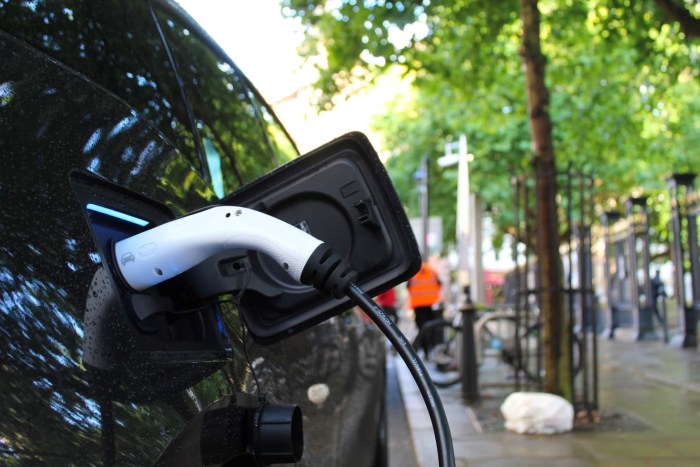A heavy metal analysis can be a useful tool for evaluating soil contamination. It determines the amount of elements in a sample, which indicates the dispersion and level of contamination. Fortunately, there are several methods available for environmental analysis. In this article, we will discuss some of them.
Inductively Coupled Plasma Mass Spectroscopy (ICP-MS)
ICP-MS is a method for quantitative analysis of heavy elements. It uses a laser ablation system to analyze solid samples, requiring minimal sample preparation. The method has a single side-effect, minor depletion of the sample material. However, this side-effect is acceptable for most applications.
ICP-MS is a highly sensitive method for heavy metal analysis, and it is widely used for determining concentrations of elements. The method works by introducing a fine aerosol of the sample to a plasma containing 6000-10,000 K. The plasma causes the atoms of the analyte to be ionized at the same time. The ions are then sorted and quantified.
The ICP-MS is capable of detecting the smallest particles, and it is also able to detect elements with very low ppt (parts-per-trillion) levels. Although the method does not have the accuracy of ICP-OES, it is able to detect elements with a much lower ppt (parts-per trillion).
ICP-MS is a fast and reliable technique for elemental analysis. It is particularly useful for measuring the isotopic ratios of elements with multiple isotopes. Click here to learn more about isotopes. Its high speed and low detection limits make it a highly versatile analytical tool. Because of these characteristics, ICP-MS is considered a mature technique that requires strict quality control.
ICP-MS is used in both primary and secondary tissue analysis. It can also be used to analyze inorganic nanoparticles. The technique has shown promising results for simultaneous determination of the concentration and size of inorganic nanoparticles in environmental and food samples.
Single-particle ICP-MS is also capable of detecting single-element elements in a single sample. It has a high degree of sensitivity, and it can also distinguish between particulate and ionic forms of analyte.
ICP-MS has numerous applications, and is one of the fastest growing trace element techniques. It was first commercialized in 1983, and today, over 16,000 systems are installed worldwide. This technology is used for industrial, pharmaceutical, environmental, and nuclear applications.
ICP-MS is the fastest elemental analysis technique available today. It can detect almost every element in the periodic table in parts per billion concentrations. This technology works by passing small amounts of material into plasma, which operates at approximately 8000 degrees Celsius. The plasma is then cooled and a mass spectrometer separates the sample ions according to their mass/charge ratio.
Atomic absorption spectroscopy
Atomic absorption spectroscopy (AAS) is another analytical technique used in this field. The technique is suitable for identifying and determining the concentrations of several metals. Table 3 provides examples of samples that are analyzed using AAS. Lead and cadmium are among the metals that have been determined in this way.
Atomic absorption spectroscopy is a technique that uses light to determine the concentration of specific metal atoms in a liquid or solid. The light is excited by a specific wavelength and the atoms in the sample absorb energy. The amount of energy absorbed is proportional to the number of atoms in the sample. The sample is then compared to a standard solution to determine the concentration of the element.
The advantages of AAS over classical gravimetric methods include increased sensitivity and selectivity. This technique has many applications in mining, oceanographic studies, drinking water, and soil analysis. There are also various types of spectroscopy used in the pharmaceutical industry. An AAS is used to determine the concentration of contaminants in soils and other materials.
Atomic absorption spectroscopy is also used in clinical samples. This technique can determine the concentrations of various materials in human muscle, liver, hair, and brain tissue. It can also help determine the levels of mercury in fish. Mercury is an extremely toxic element that can build up in the environment and pose a risk to the food chain.
Methods to analyze heavy metals
Determining the level of metals in the environment is essential in creating an action plan to help mitigate their presence. Methods of heavy metal analysis are a major part of environmental pollution control. They can help ensure that toxic metals are not present in drinking water and are a reliable indicator for pollution prevention. Methods to analyze metals are widely used for monitoring the presence of heavy metals in a wide range of samples, from soil to solid waste.
The first step is to identify the metals that are present in a particular sample. This will determine their concentration. Using inter-element analysis, these metals are compared with the levels in waste water. If the correlations are high, the source of the heavy metals is likely to be anthropogenic.










